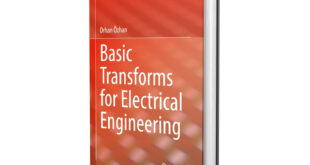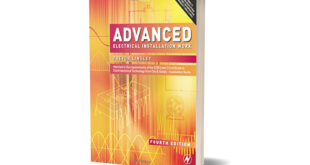How was the dictionary constructed?
As I knew this project would require a divide-and-conquer approach with fault-tolerance, I sought to partition the dictionary by defining areas that covered all aspects of Electrical Engineering. I then matched these up to IEEE defined interest areas to ensure that complete coverage was provided. This created a great deal of overlap, which was intentional. I knew that terms needed to be defined several different ways, depending on usage and I needed to ensure that every term would be defined at least once.

The mapping of the Dictionary’s areas to the IEEE interest areas are as follows:
- Power systems
- Power Engineering
- Power Electronics
- Circuits and systems
- Circuits and Systems
- Instruments and Measurements
- Electric motors and machines
- Power Engineering
- Power Electronics
- Control systems
- Control Systems
- Robotics and Automation
- Digital electronics, VLSI, hardware description language
- Consumer Electronics Electronic Devices Industrial Electronics
- Instruments and Measurements
- Computer engineering (processors)
- Computer
- Electromagnetics
- Electromagnetic Compatibility
- Magnetics
- Microelectronics and solid state devices
- Industrial Electronics
- Instruments and Measurements
- Computer engineering (I/O and storage)
- Computer
- RF, radio, and television
- Broadcast Technology
- Microwave systems
- Antennas and Propagation
- Microwave Theory and Techniques
- Communications and information processing
- CommunicationsInformation TheorySystems, Man, and Cybernetics
- Reliability
- Electro-optical and lightwave systems
- Lasers and Electro-Optics
- Signal and image processing
- Signal Processing
- Systems, Man, and Cybernetics
- Packaging
- Components, Packaging, and
- Manufacturing Technology
Note that Software Engineering was not included as an area, and most software terms have been omitted. Those that were included were done so because they relate to some aspect of assembly language programming or low-level control, or artificial intelligence and robotics. For those interested in software engineering terms, CRC’s
How to use the dictionary
The dictionary is organized like a standard language dictionary except that not every word used in the dictionary is defined there (this would necessitate a complete embedding of an English dictionary). However, we tried to define most non-obvious technical terms used in the definition of another term.
In some cases more than one definition is given for a term. These are denoted (1),(2), (3), . . ., etc. Multiple definitions were given in cases where the term has multiple distinct meanings in differing fields, or when more than one equivalent but uniquely descriptive definition was available to help increase understanding. In a few cases, I just couldn’t decide between two definitions. Pick the definition that seems to fit your situation most closely. The notation 1., 2., etc. is used to itemize certain elements of
a definition and are not to be confused with multiple definitions.
Acronym terms are listed by their expanded name. Under the acronym the reader is referred to that term. For example, if you look up “RISC” you will find “See reduced instruction set computer,” where the definition can be found. The only exceptions are in the cases where the expanded acronym might not make sense, or where the acronym itself has become a word (such as “laser” or “sonar”).
While I chose to include some commonly used symbols (largely upon the recommendations of the contributors and area editors), this was not a principle focus of the dictionary and I am sure that many have been omitted.
 widemep.com
widemep.com

